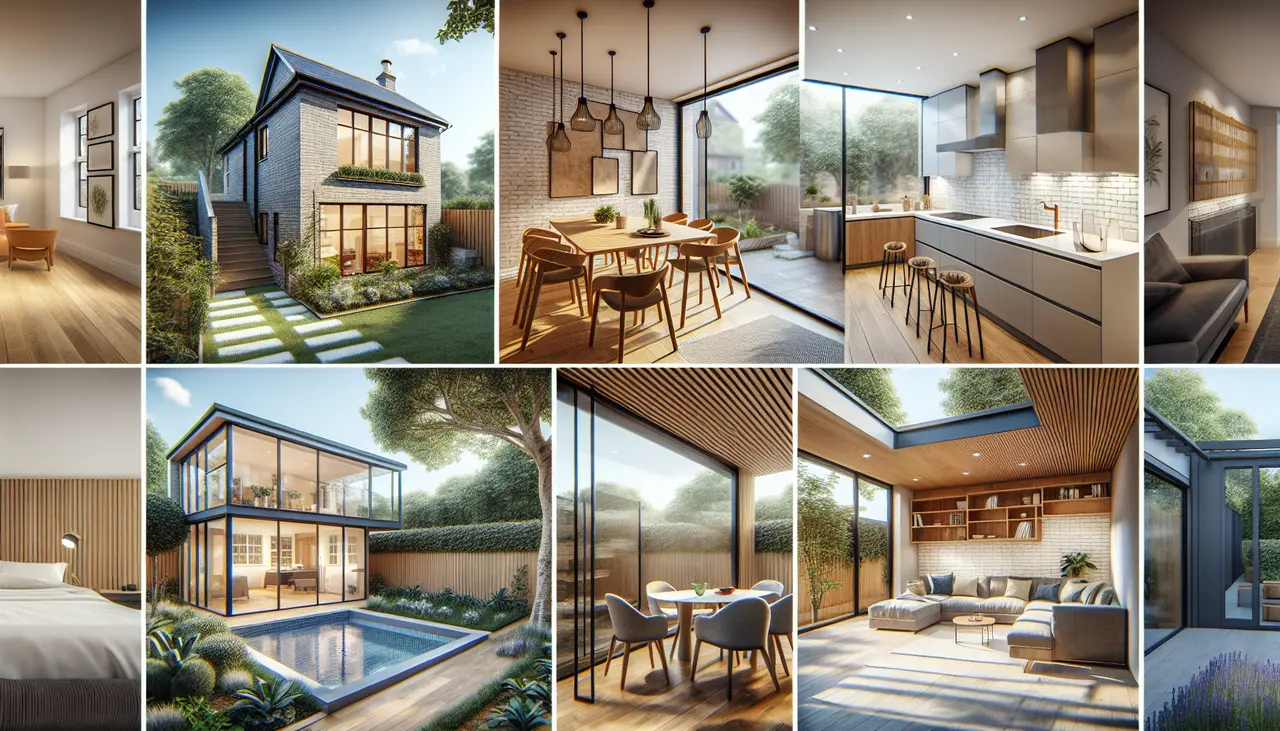Analyzing the Need for Extra Space: What to Consider
When thinking about adding extra space to your home, it’s crucial to first evaluate your family’s needs. Ask yourself, why do you need more space? Is it because your family is growing, you need a home office, or maybe you want a bigger kitchen? Once you pinpoint the reason, it becomes easier to plan your expansion in a way that adds both value and functionality to your property. Also, consider the future. Will this extra space still be useful in 5 or 10 years? Think about versatility; for example, a space that serves as a playroom today can transition into a study or guest room down the line. Finally, don’t forget to weigh the costs against the benefits. Expanding your home is a significant investment, and you want to ensure it adds not just space, but also value to your property. A well-planned expansion can enhance your home’s market appeal if you decide to sell in the future.
Top Home Expansion Ideas That Boost Value
When you’re thinking about adding more space to your home, you gotta keep value in mind too. Not all projects are the same. Here are some top-notch ideas that really pack a punch in boosting your property’s value. First up, consider building an addition. This could be a new room on the ground floor or even a second story if your structure can handle it. This type of expansion makes your home bigger and opens the door for more functionality—a new bedroom, a larger kitchen, you name it. Another smart move is finishing your basement. It’s like finding extra living space you didn’t know you had. It can become a family room, a home theater, or even a rentable apartment. Deck or patio additions also bring a solid return. They extend your living space right into the outdoors, making for a perfect entertainment area. Don’t overlook the power of an updated kitchen or bathroom. These renovations might not add square footage, but they significantly increase your home’s appeal and value. Lastly, adding a garage, if you don’t already have one, or expanding your existing one, not only provides more storage but also attracts buyers who value secure, covered parking. Remember, the goal is to pick the project that adds the most value for you now and pays off if you sell later.
The Benefits of Building Outward
Building outward is often the first idea that pops into your head when you think of expanding your home. And why wouldn’t it be? It’s straightforward and packed with benefits. First up, building outward typically means adding a room or extending your living space on the ground level. This could be anything from a sunroom, an extra bedroom, to an expanded living area. The beauty of this approach is you don’t have to mess with the foundation or structure of your existing home too much. You’re basically extending the footprint outward, which can be less complex than going upward and dealing with the roof.
One major perk is the added value to your property. More livable space equals more appeal to potential buyers down the line. Think about it; a spacious home is more enticing than one that feels cramped. Also, if you have a garden or yard, building outward can beautifully blend indoor and outdoor living spaces. Imagine a new dining area that leads to a patio or a kitchen extension with floor-to-ceiling windows overlooking the garden. It’s all about enhancing the flow of your home and making the most of your property’s existing features.
Cost-wise, going out can be more budget-friendly compared to adding another story. You might save on structural modifications that an upward expansion would entail. Plus, it often requires less time, meaning you can enjoy your new space sooner rather than later.
In summary, building outward is a solid move for homeowners looking to add space and value. It’s less intrusive, potentially costs less, and can significantly boost your property’s appeal. Whether you’re dreaming of a cozy new living room or a spacious kitchen, expanding outward is worth considering.
Exploring Vertical Expansion: Adding a New Story
Thinking of adding more space to your home without eating up your yard? Going up is the way to go. Adding a new story isn’t just smart; it bumps up your property’s value big time. But before diving in, know it’s a big task. You’re not just slapping on a new room. You’ll need to check if your current structure can handle it. Often, this means beefing up your home’s foundation and reviewing local zoning laws—can’t have your dream addition turning into a legal headache.
Cost-wise, it’s a hefty investment, but it pays off. You’re essentially building a new house on top of your house. Think about the extra bedrooms, bathrooms, or even an office space you’ll gain. And when it comes to selling, buyers love extra living space.
So, if your lot is tight and you’re itching for more room, looking up might just be your best move. Remember, planning is key. Work with a pro to avoid any nasty surprises and ensure your vertical expansion goes smoothly.
Transforming Basements and Attics
Turning basements and attics into functional spaces is a smart way to add both value and square footage to your home. When it comes to basements, think about creating a family room, a home office, or even a rentable apartment. These changes can make your home more useful for you now and more attractive to buyers later. Attics have huge potential too. You can convert them into extra bedrooms, cozy reading nooks, or creative studios. Just remember, the key to successfully transforming these spaces lies in addressing issues like insulation, ventilation, and lighting first. This ensures they’re comfortable and welcoming. Plus, adding windows or skylights in attics can hugely increase natural light, making the space feel bigger and more inviting. Don’t forget, while these transformations do require an upfront investment, the payoff in terms of added value and practical living space is often well worth it.
Integrating Indoor and Outdoor Living Spaces
Integrating indoor and outdoor living spaces is not just a trend; it’s a smart way to add value and space to your home. Imagine a seamless flow between your kitchen or living room and a beautifully designed patio or garden. This kind of setup not only makes your home feel larger but also boosts its appeal to potential buyers. Start by considering big glass doors or retractable walls that open up to your outdoor area. Add comfy outdoor seating, maybe a fire pit or an outdoor kitchen, and you’re not just expanding your living space; you’re enhancing your lifestyle. Remember, the key to successfully blending these spaces lies in maintaining a cohesive design theme and ensuring that your outdoor area is just as inviting as your indoor space. This approach can transform your home, making every day feel like a mini-vacation.
Essential Tips for Planning Your Home Expansion
First off, know what you want. Are you aiming for more space in the living room, an extra bedroom, or maybe a home office? Understanding your goal shapes the whole project. Always check the legal stuff before diving in. This means zoning laws, building codes, and permits. You don’t want to start only to find out your project’s a no-go in your area.
Next, budget wisely. Costs can balloon quickly. Consider how much you can realistically spend and keep a buffer for unexpected expenses. It’s not just about the build; it’s also the finishing touches that add up.
Hiring the right people is crucial. This isn’t the time to go with someone because they’re a friend of a friend. Look for experienced architects and contractors with solid references. They can make or break your project.
And lastly, think about the future. How will this expansion affect your home’s value? Is it something buyers will find appealing, or is it too personalized? Making smart choices here can mean not just more space for you but a better return on your investment down the line.
Navigating Zoning Laws and Building Permits
Before turning your home expansion dreams into reality, it’s crucial to first deal with zoning laws and building permits. Zoning laws dictate what you can and cannot do with your property. They’re set by local governments and cover things like how tall your building can be, how close it can be to the property line, and what type of expansions are allowed. To avoid legal headaches later, start by checking with your local zoning office about what’s allowed. Now, for building permits – think of them as your green light to start construction. These permits confirm your project meets local building codes and safety standards. You’ll need to submit detailed plans and sometimes, have inspections during and after construction. Without a building permit, you might have to pause your project, or worse, tear down your work. So, tackle these steps early to smooth out your home expansion journey.






